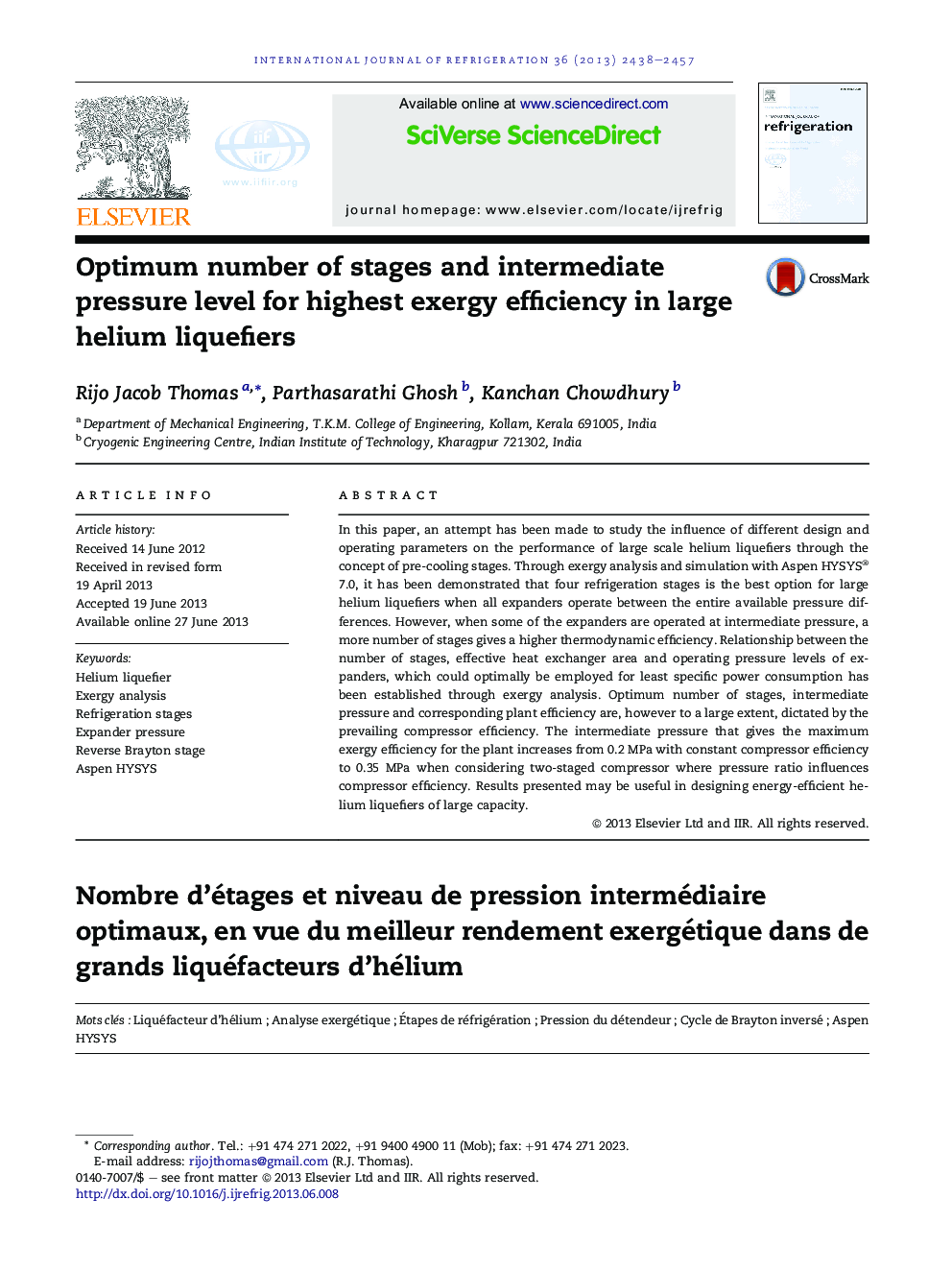| Article ID | Journal | Published Year | Pages | File Type |
|---|---|---|---|---|
| 788739 | International Journal of Refrigeration | 2013 | 20 Pages |
•Established optimum number of refrigeration stages through exergy analysis.•Four refrigeration stages is optimum when all expanders operate at full pressure ratio.•Performance improves when some expanders operate at an intermediate pressure.•Optimum surface area for each heat exchanger is found for different configurations.•Optimum intermediate pressure depends on compressor efficiency of all its stages.
In this paper, an attempt has been made to study the influence of different design and operating parameters on the performance of large scale helium liquefiers through the concept of pre-cooling stages. Through exergy analysis and simulation with Aspen HYSYS® 7.0, it has been demonstrated that four refrigeration stages is the best option for large helium liquefiers when all expanders operate between the entire available pressure differences. However, when some of the expanders are operated at intermediate pressure, a more number of stages gives a higher thermodynamic efficiency. Relationship between the number of stages, effective heat exchanger area and operating pressure levels of expanders, which could optimally be employed for least specific power consumption has been established through exergy analysis. Optimum number of stages, intermediate pressure and corresponding plant efficiency are, however to a large extent, dictated by the prevailing compressor efficiency. The intermediate pressure that gives the maximum exergy efficiency for the plant increases from 0.2 MPa with constant compressor efficiency to 0.35 MPa when considering two-staged compressor where pressure ratio influences compressor efficiency. Results presented may be useful in designing energy-efficient helium liquefiers of large capacity.
